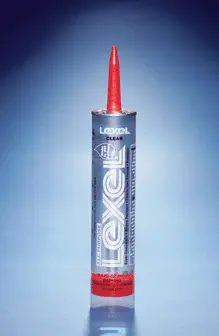How do I choose the most appropriate type of caulk for my next job?
When you visit the lumber yard or pro-dealer, it’s easy to feel overwhelmed as you stare literally, at bin after bin of different types of caulks. How do you do which to choose? And after all, is it even all that important – I mean come on it’s just a tube of caulk, right? Wrong! Although caulks and sealants account for a very small percentage of most job costs, and many contractors actually give it very little thought, that could be a very costly mistake. Selecting the best sealant for the job can save you time, money, and unnecessary headaches during and long after the job is complete.
Rule #1 – Spending a little more upfront can mean big savings overall.
Most contractors know that spending pennies, or even a dollar or two more on a high-quality product pays off in the long run. A low-grade, poorly performing sealant can become a big problem if it fails and leaks result. It’s important to choose a high-performance caulk in order to prevent costly callbacks.
Rule #2 – Choose based on the specific application.
Not all caulks and sealants are formulated to handle all applications. For instance, areas where there is potential for extreme moisture, driving rain, or pooling of water are not suited for a water-based caulk and require a sealant made to handle and perform under such wet conditions.
Rule #3 – If you want to paint it, make sure it’s formulated to take paint.
Again, not all caulks and sealants are formulated to take paint and can result in a real mess. Silicones for example, are not the best choice for jobs that require painting the joint or seal. The paint will literally “melt” off of a silicone bead. For these applications, it’s best to choose a high-quality water-based or non-siliconized caulk (a caulk containing NO silicone will perform best). Read carefully, many caulks claim to be paintable, but for best results make sure it does not contain silicone.
Rule #4 – Make sure your caulk is flexible.
Remember that all homes move – some move a little, but some move a lot! If a home experiences significant movement many caulks are not formulated to handle it and will inevitably crack and fail. Preventing this kind of costly callback is east by simply making sure you’ve selected an elastomeric caulk that is formulated for extreme joint movement.
Rule #5 – Consider your substrate.
Choose caulks and sealants that adhere specifically to the substrate you’re dealing with. Some substrates are more difficult for caulks to adhere to than others. For instance, some tile, concrete, and grouts may be a challenging substrate for many caulks to adhere to well. Still other substrates may have aesthetic qualities about them (e.g. brick, mortar, or other textured surfaces) that would not only perform better, but look much better with the use of a textured caulk.
Taking time to consider your job’s requirements, and using careful discernment to select only high-performance caulks specifically designed to handle those requirements, is one of the keys to successful caulking and sealant selection and application.
Editor’s Note: This article was provided by Sashco. For more information about Sashco’s complete line of high-performance caulks and sealants visit www.sashco.com.



